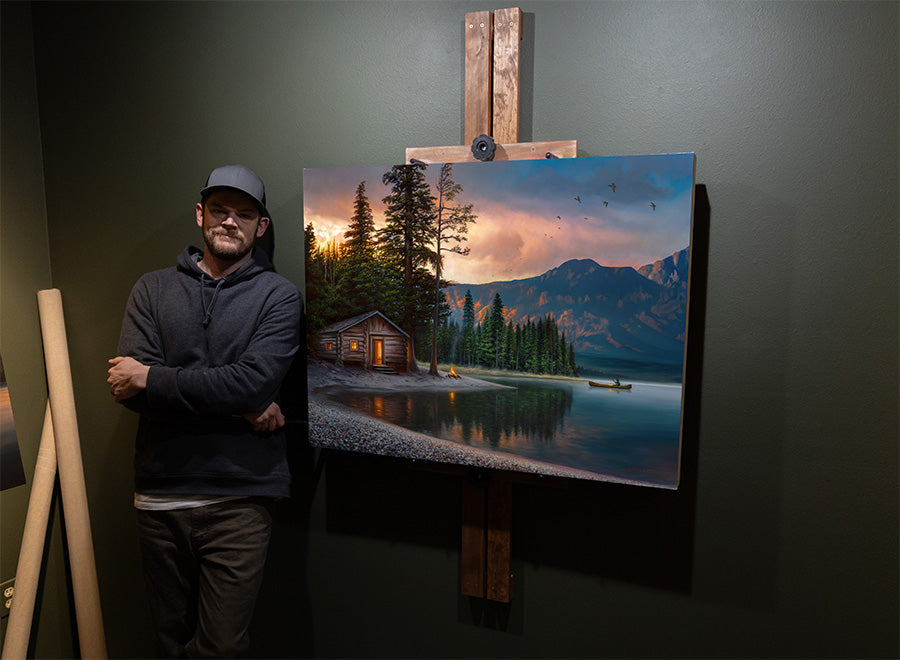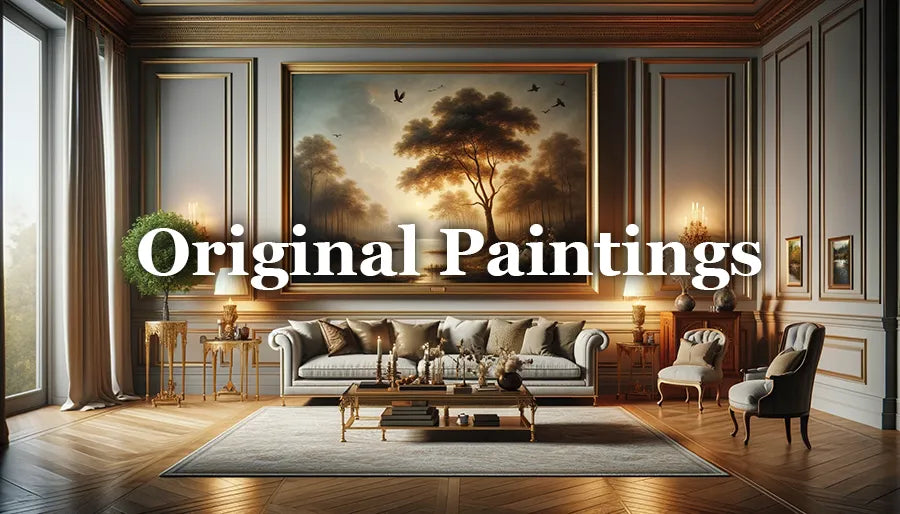This blog is supported through the affiliate links below
The History of Oil Painting: From Early Beginnings to the Digital Age
From its early beginnings to its modern-day innovations, oil painting has fascinated both artists and art lovers for centuries. Let's go on a detailed journey through its rich history. Whether you're a casual viewer or an avid art collector, this guide will offer you an overview of this remarkable art form.
 "Maestà (Madonna with Angels and Saints)" Oil painting by Duccio, 1311 {{PD-US}}
"Maestà (Madonna with Angels and Saints)" Oil painting by Duccio, 1311 {{PD-US}}
A Glimpse Into the Early Days
Before oil painting took the art world by storm, artists primarily used frescoes and tempera. The rise of oil painting in Europe can be attributed to Jan van Eyck, a Flemish painter from the 15th century. He didn't just adopt oil painting, but rather revolutionized it. His work, notably the Ghent Altarpiece, displayed unprecedented detail and depth, setting a new standard for what could be achieved with oil paint.
 "The Ghent Altarpiece" Oil painting by Jan van Eyck, 1432 {{PD-US}}
"The Ghent Altarpiece" Oil painting by Jan van Eyck, 1432 {{PD-US}}
The Technique that Changed the Game
Oil painting isn't just another medium; it fundamentally changed how artists work. Unlike other mediums that dried quickly, the longer drying time of oil paint gave artists the gift of time. They could now layer, blend, and fine-tune to their heart's content. This luxury changed the artistic landscape, making oil paint the go-to medium for those aiming for intricate details and a range of textures.
 "St George and the Dragon" Oil painting by Paolo Uccello, 1460 {{PD-US}}
"St George and the Dragon" Oil painting by Paolo Uccello, 1460 {{PD-US}}
Renaissance: The Golden Era of Oil Painting
The Renaissance wasn't just about the rebirth of classical ideals; it was a golden age for oil painting. Artistic giants like Leonardo da Vinci, Michelangelo, and Raphael eagerly embraced the medium. Techniques evolved rapidly, enabling artists to depict both realistic portraits and stunning landscapes. This period was a crucial step in the medium's evolution, one that would influence art for generations to come.
 "The Last Supper" by Leonardo da Vinci,1498 {{PD-US}}
"The Last Supper" by Leonardo da Vinci,1498 {{PD-US}}
Beyond Portraits: Capturing Emotions and Light
The Renaissance era gave rise to the glazing technique, a method allowing artists to create soft transitions of light and shadow. This technique was transformative, making paintings look almost lifelike. Leonardo da Vinci's "Mona Lisa," for instance, is a stellar example. Her mysterious expression and the subtle lighting on her face have puzzled and enchanted viewers for centuries.
 "Mona Lisa" by Leonardo da Vinci, 1506 {{PD-US}}
"Mona Lisa" by Leonardo da Vinci, 1506 {{PD-US}}
The Drama of the Baroque and Romantic Eras
As we move into the 17th and 18th centuries, oil painting became a medium for emotion and narrative. The Baroque and Romantic periods ushered in a sense of drama, allowing artists like Caravaggio and Rembrandt to use oil paint for evocative storytelling. The focus shifted from mere representation to a deeper exploration of human emotion, setting the stage for a new kind of artistic expression.
 "Judith Slaying Holofernes" by Artemisia Gentileschi, 1612 {{PD-US}}
"Judith Slaying Holofernes" by Artemisia Gentileschi, 1612 {{PD-US}}
Movement, Depth, and Atmosphere
The Romantic period, marked by artists like J.M.W. Turner, shifted the artistic focus towards landscapes and atmosphere. Turner, in particular, mastered the use of oil paint to capture movement, depth, and atmospheric effects. His works are less about realistic accuracy and more about conveying the emotive power of nature, providing viewers with a whole new level of engagement.
 "The Fighting Temeraire" by J.M.W. Turner, 1839 {{PD-US}}
"The Fighting Temeraire" by J.M.W. Turner, 1839 {{PD-US}}
Impressionism and Beyond: The Modern Transformation
Breaking away from artistic traditions, the late 19th century gave birth to Impressionism and Post-Impressionism. Pioneers like Claude Monet and Vincent van Gogh pushed the boundaries of color and brushwork. Monet focused on capturing the ever-changing effects of light, setting the stage for modern art movements ranging from Cubism to Surrealism.
 "Impression Sunrise" by Claude Monet, 1872 {{PD-US}}
"Impression Sunrise" by Claude Monet, 1872 {{PD-US}}
Oil Painting in the Contemporary World
Today, oil painting continues to be a cornerstone in the art world. While drawing inspiration from the past, contemporary artists are adding modern spins and even incorporating digital elements. The genre stays vibrant and relevant, demonstrating that oil painting will continue to evolve, surprise, and captivate us for years to come.
 "A Lasting Impact" Oil painting by Chuck Black
"A Lasting Impact" Oil painting by Chuck Black
Final Thoughts
Oil painting is more than just a medium—it's a legacy. With each era contributing its own techniques and aesthetics, oil painting stands as a versatile and evolving form of artistic expression. The next time you stand before an oil painting, whether it's a historic masterpiece or a contemporary work, you'll have a better understanding of the medium's complex journey.
Seeking a distinctive addition to your collection?
Explore the online gallery of Chuck Black original paintings.
Browse The Collection





